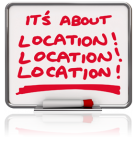Things To Do The First Week After You Move

Serving South Florida

Filed under: Blog, Boca Raton real estate, Down Sizing, Exclusive Buyer Agency, Exclusive Buyer Agent, First Time Homebuyers, Florida Real Estate, Home Buyer Advice, Home Buyers, Home Maintenance, Homebuyer Advice, House Closings, Real Estate, real estate news, Relocation, South Florida Real Estate by Kim Bregman
Comments Off on Things To Do The First Week After You Move

The novel coronavirus (COVID-19) has put a stop to the normal routines of everyday life both in the U.S. and abroad. And while social distancing is the course of action to take until told otherwise, moves aren’t always something that can wait. Real estate is considered an essential service in all states and there are many services providers to assist you in facilitating a move to a new home.
By taking extra safety precautions and minimizing social contact, you can still move safely. If you are about to move, you can still pull it off with a little extra planning and a few precautionary steps.
Here are some tips for making your move as safe, seamless and stress-free as possible.
There have not been any notable shutdowns of service among major moving companies. That being said, decisions about closures may be left to individual franchise owners. If you have already scheduled your move and haven’t heard anything, assume that your moving company is still providing services unless told otherwise, but still call just to confirm.
If you’re worried about moving during a pandemic for a move that is still upcoming and for which you haven’t scheduled movers, it’s hard to say what will and will not be available in the months to come. For now, continue to do research on companies and ask directly what steps are being taken when you reach out. What has changed at this point is largely going to be related to the customer experience itself, including frequent hand washing among movers and no physical contact between movers and clients.
If you need to select a moving company, ask for a virtual quote and see if the company offers fully contactless service. Forgo handshakes, for obvious reasons. A smile and a generous tip (sent through Venmo, PayPal or another contactless digital platform) are a welcome substitute. These companies have virtual estimate procedures available for competitive quotes
Moving companies are taking the coronavirus pandemic very seriously. To that end, companies across the country have put into place protocols designed to protect their employees and their customers. These include:
All of these practices help ensure that moving services can remain available in a safe way.
| Company | Status | Additional info |
| AmeriFreight | Open | Learn more |
| Montway Auto Transport | Open | Learn more |
| Sherpa Auto Transport | Open | Learn more |
| Ship a Car Direct | Open | Learn more |
| uShip | Open | Learn more |
| Company | Status | Additional info |
| Allied Van Lines | Open | Learn more |
| American Van Lines | Open | Learn more |
| Expedia Van Lines | Open | Learn more |
| First National Van Lines | Open | Learn more |
| International Van Lines | Open | Learn more |
| Interstate Moving & Relocation Group | Open | Learn more |
| North American Van Lines | Open | Learn more |
| PODS | Open | Learn more |
| Silver Star Moving Group | Open | Learn more |
| United Van Lines | Open | Learn more |
Same as moving companies, major storage companies continue to run operations. What you might be able to expect however is limited hours of accessibility and/or a reduction in the number of customers who are able to access their units at any one time. Storage companies should also be following proper hygiene practices, including sanitization of access pads and the requisite six feet or more of space between customer and customer and customer and employee.
| Company | Status | Additional info |
| CubeSmart | Open | Learn more |
| Extra Space Storage | Open | Learn more |
| Public Storage | Open | Learn more |
The process of a DIY move looks pretty much the same now as it did before COVID-19, minus the ability to have a couple friends come over and lend a hand in exchange for pizza. Some additional things that you will want to do however include keeping hand sanitizer, soap, and paper towels accessible at all times, we well as making a detailed plan for both your departure and arrival.
Major rental truck companies continue to be in service, as they are considered essential for transportation and personal mobility needs. Again, what may be different is the experience, since companies like Enterprise and U-Haul have put into place their own protocols for physical distancing. This means that your pick-up and drop-off location may not be at the branch office, and that you’ll have to make your reservation online or over the phone instead of in person.
If you rent, talk to your current landlord about how you can safely drop off keys and collect your security deposit, and talk to your new landlord about the process for a safe move in. Putting in a blueprint of steps ahead of time will help you maintain social distancing during your DIY move and answer any questions you might have about the process.
| Company | Status | Additional info |
| Budget | Open | Learn more |
| Enterprise | Open | Learn more |
| Penske | Open | Learn more |
| The Home Depot | Open | Learn more |
| U-Haul | Open | Learn more |
One silver lining is that social distancing means that you might have more time to devote to organizing your home prior to your move and getting rid of the things you no longer want or need. If you plan on donating items like clothing, linens, furniture, shelf stable non-perishables, etc., call the place that you would like to donate to ahead of time and see what their policies are. While many people are in need during this time, it’s likely not going be quite as easy as just driving to your nearest donation center and dropping stuff of (but that doesn’t mean you shouldn’t do it).
| Company | Status | Additional info |
| 1-800-GOT-JUNK | Open | Learn more |
| College Hunks Hauling Junk | Open | Learn more |
| LoadUp | Open | Learn more |
| Waste Management Dumpster Rentals | Open | Learn more |
This is important to confirm your reservation and discuss best practices for moving day. Moving companies are putting in lots of safeguards to help protect their clients, and it helps to be on the same page as them in terms of what is expected.
You are going to want to get it right with just one trip to the store, so make sure you know exactly what you’re going to need for your move. Don’t use free or recycled moving boxes. The coronavirus can live on cardboard for as long as 24 hours, so now is not the time to be picking up free moving supplies from places that are recycling them. Boxes that you already have in your home are fine, but if you need any extras then you’ll need to go to the store and buy them new (even better if you can then purchase them through self-checkout). Better yet, order all your moving supplies online and have them shipped to your residence. Clean as you pack. Use this opportunity to sanitize your belongings, wiping items down with disinfectant. If you don’t have any, you can make one with a solution of one tablespoon bleach to one gallon of water.
Coronavirus can last a long time on surfaces, including up to 24 hours on cardboard boxes. Your movers will be wearing gloves, but for everyone’s safety you should still have your boxes packed and sitting untouched at least a day before your movers arrive.
To aid your movers in following necessary hygiene practices, be sure to leave out products that they can use while they transport your items to and from the moving truck. That includes soap and paper towels by the sink, and hand sanitizer by the door that they’ll be entering and exiting through. If you’re concerned about having enough supplies, let your moving company know so they can be sure to bring them along for use during the move.
In advance of your move, reach out to your neighbors — especially if you live in an apartment building — and share the date and time you plan to move. This gives everyone in your direct vicinity an opportunity to avoid unnecessary contact and let you know if your timing is a problem.
Be sure to deep clean and sanitize your new home before you move into it. Here are a few resources and tips to help:
CDC’s recommendations on how to clean and sanitize your home
If you have an extra minute, here are some additional things to consider
Additional resources:
Moving is stressful under the best of circumstances; this is a scary time and certainly takes moving stress to the next level. With some planning and organization, you can relocate and stay safe even in an environment with a pandemic.
Filed under: Blog, Boca Raton real estate, coronavirus, Down Sizing, Exclusive Buyer Agency, Exclusive Buyer Agent, First Time Homebuyers, Home Buyer Advice, Home Buyers, home safety, Homebuyer Advice, House Closings, International Home Buyers, Real Estate, Real Estate Closings, real estate news, South Florida Real Estate by Kim Bregman
Comments Off on Guidance for Moving During COVID-19

Moving to a new house, city or state is one of the most stressful things a person can go through. Even when everything goes smoothly, you’ll likely be exhausted when all is said and done. Whether it’s down the street or across the country, moving is a major task that requires much effort and coordination. For this reason, many people choose to hire a moving company, but knowing who to entrust your belongings can be a daunting task.
While you do have the option of going the DIY route when moving, things will be so much easier and more convenient for you if you hire professional movers instead. You’ll incur certain costs by doing so, but the help they can provide is worth it.
It’s also a common mistake to hire the first moving company you lay your eyes on in an ad. There are so many moving companies out there, but not all are created equal. The movers you should hire are legitimate ones with licenses, insurance and other vital considerations. You should also get quotes from at least three movers to determine the best deal. Ask for references and verifying credentials. And remember to never pre-pay for a move!
Local Movers
There are many kinds of moving companies depending on the type of move you’re looking to make. Some companies specialize in local moves and will have limitations on the distance they’re willing to travel. Local movers are great for small cross-town moves since they typically charge by the hour.
Long-Distance
If you’re moving across the country, you’ll want to find a long-distance mover. These movers have special licensing that allows them to operate across state lines and they typically charge a bulk rate based on how quickly you need to be moved and how many items you’ll be moving. In some circumstances, you may even need to move out of the country. International movers will help you pack and get your items overseas. These moving companies are usually prepared for immigration and customs issues.
Full-Service
If you want a completely stress-free move, you should consider a full-service moving company. These companies take all the hassle out of your move by disassembling and packing up your old house and then unpacking and reassembling everything in your new place. Additionally, they provide all of the materials so you don’t have to worry about how much tape you’ll need or what size boxes to get.
Filed under: Blog, Boca Raton real estate, Down Sizing, Exclusive Buyer Agent, First Time Homebuyers, Florida Real Estate, Foreign Home Buyers, Home Buyer Advice, Home Buyers, Homebuyer Advice, International Home Buyers, International investors, Real Estate, real estate news, Relocation, Retirement, South Florida Real Estate by Kim Bregman
Comments Off on Types of Movers for Home Buyers

Filed under: Blog, Down Sizing, Exclusive Buyer Agent, First Time Homebuyers, Florida Real Estate, HELOC deductions, Home Buyer Advice, Home Buyers, Home Financing, Homebuyer Advice, International Home Buyers, International investors, Mortgage Interest Deductions, Real Estate, Real Estate Investment, real estate news, Relocation, Retirement, South Florida Real Estate, Tax deductions by Kim Bregman
Comments Off on Tax Considerations When Deciding to Relocate.

The Internet is full of checklists and resources to use if you are planning to move. There are packing timelines. There are lists of packing supplies. There are even directions on how to pack boxes.
But moving is much more than purging and organizing your personal affects. There are legal tasks you need to take care of too.
Here are 5 legal tasks to complete when you move:
Filed under: Blog, Exclusive Buyer Agent, First Time Homebuyers, Florida Real Estate, Home Buyer Advice, Home Buyers, Homebuyer Advice, Real Estate, Real Estate Closings by Kim Bregman
Comments Off on 7 Legal Tasks to Do When You Move

Filed under: Blog, Down Sizing, Exclusive Buyer Agent, First Time Homebuyers, Florida Real Estate, Home Buyer Advice, Home Buyers, Homebuyer Advice, Real Estate, Real Estate Closings, Real Estate Investment, Relocation, South Florida Real Estate, western north carolina real estate by Kim Bregman
Comments Off on Things Not To Forget Before You Move

Filed under: Blog, Exclusive Buyer Agent, First Time Homebuyers, Florida Real Estate, Home Buyer Advice, Home Buyers, Homebuyer Advice, Kim Around the Web, Real Estate, real estate news, Real estate trends, Relocation, South Florida Real Estate, western north carolina real estate by Kim Bregman
Comments Off on Location, Location, Location!

Filed under: Blog, Exclusive Buyer Agent, First Time Homebuyers, Florida Real Estate, Home Buyer Advice, Home Buyers, Home Maintenance, Homebuyer Advice, House Closings, Real Estate, Real Estate Closings, real estate news, Relocation, western north carolina real estate by Kim Bregman
Comments Off on You Are Under Contract…What’s Next?

So, you’re moving to a new home. Congratulations! Whether you’re traveling across town or across the country, here are some tips for making moving day as easy and stress-free as possible for the entire family, including your beloved pets.
For long-distance moves, make sure you give your pet potty breaks and fresh water whenever you stop for a break yourself. Make sure pets are leashed at all times during potty breaks.
Filed under: Blog, Exclusive Buyer Agent, First Time Homebuyers, Florida Real Estate, Home Buyer Advice, Home Buyers, Homebuyer Advice, Kim Around the Web, Real Estate, Real Estate Closings, Relocation, western north carolina real estate by Kim Bregman
Comments Off on Tips For Moving With Pets

Lots of people these days are following that motto and trying to live a life of less; less junk, less clutter, less stress and less house. So how do you downsize your world when you’ve spent your life accumulating stuff? Planning your space before you downsize is essential; downsizing requires some careful thought!
Whether you are a baby-boomer having to move your parents or a family who wants to downsize from the stress of a large home, to people wanting to plan a second home on a small scale, or even for people just wanting to have less to manage in their current home. Empty nesters and not-so-empty-nesters alike will find tried and true principles to get them through the challenges. Downsizing doesn’t have to mean losing your style either. In fact, when you do this right, you can end up with even more style with less stuff.
If downsizing is in the foreseeable future for you or a parent, here are seven ways to pare down the possessions. If downsizing seems daunting, remember this: if the home will be placed on the market, you’ll likely have to cut clutter nonetheless.
Plan backwards from moving day. If you have a clear idea when you (or a parent) are planning to move, start downsizing three months prior. It sounds taxing, but tackling every room (and/or garage, basement or attic) in one fell swoop is more challenging, if not impossible – especially for homeowners who’ve stayed put for years. Sorting through one room at a time is best.
Write a list of all the items you love and can’t live without; it will help you bid adieu to things that didn’t make the list. It’s hard to persuade people they can’t take everything with them, but by keeping what’s on your wish list, you won’t be upset about the things you can’t keep.
Stick to the OHIO rule. “Only handle it once.” Avoid placing items in “maybe” piles, particularly when helping a parent who may have a difficult time letting go. Ask yourself or your parent if they would replace the item if it disappeared – this will make the process feel much less like a trashing of beloved possessions.
Remember more isn’t always better. We all have items we’re saving “just in case” the original breaks. Don’t be afraid to purge duplicates. The same applies to clothing – avoid holding on to garments that no longer fit, but might “one day.”
Get a feel for the size of your new rooms by comparing them to rooms of similar dimensions in your present home. For instance, your living-room-to-be might be roughly the same size as your current bedroom. You may think you can squeeze in two sofas, but this kind of reality check could help you realize that only one will fit comfortably.
Get cash for your castoffs. Remember the three-month rule? If you’re planning to sell an item, start early – some things may not move as quickly as you’d like, and you don’t want to be stuck with items you no longer want come moving day. Keep in mind that eBay charges a selling fee, and items like shoes or books tend to languish on Craigslist.
Contact an auction house. If you or your parent has an assortment of valuable items, like antique furniture or artwork, coin and stamp collections, et. al. consider enlisting an auction house rather than an antique dealer – dealers want the most bang for their buck, not yours. Compile a large lot so the appraiser can assess items in one visit. An estate sales group can help facilitate the sale or auction of high-end belongings, too.
Donate as much as you can. Donating items to charitable organizations can make parting with possessions much more manageable. In many areas, the Salvation Army is available to transport big-ticket items like furniture or appliances. Other house wares in good condition can be donated to Goodwill or a local charity.
Filed under: Blog, Down Sizing, Exclusive Buyer Agent, First Time Homebuyers, Home Buyer Advice, Home Buyers, Kim Around the Web, Real Estate, Relocation by Kim Bregman
Comments Off on Down Sizing Tips
 Kim N. Bregman
Kim N. BregmanAll information is provided by the licensed REALTOR®/Broker/Agent. This information is not verified for authenticity or accuracy and is not guaranteed. This website is not responsible or liable in any manner for any content posted herein or in connection with our services. Information is not guaranteed and must be confirmed by the end user.
Copyright © 2024 OPTIMA PROPERTIES. All Rights Reserved. Privacy Policy | Intellectual Property Rights | Sitemap | Real Estate Website Design & Internet Marketing by Agent Image